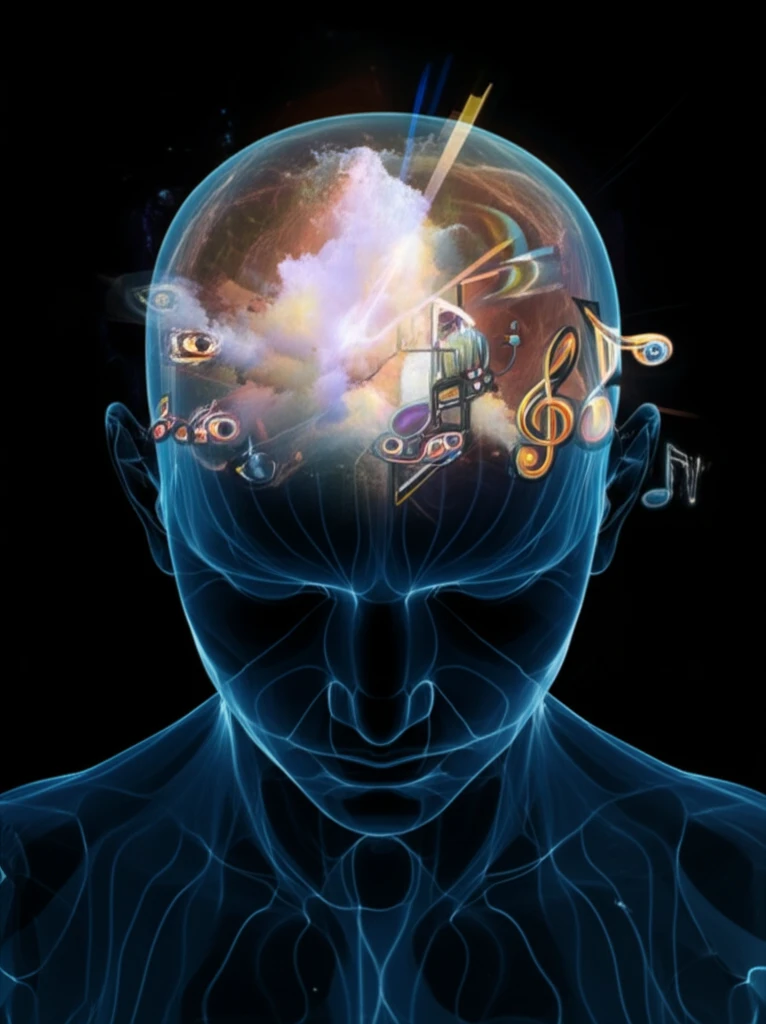
Unlock Your Senses: How Sound and Sight Team Up in Your Brain
"Discover how audiovisual integration sharpens perception, enhancing sensitivity and acuity for a clearer, faster understanding of the world around you."
Our brains are master multitaskers, constantly merging information from different senses to create a complete picture of our surroundings. This ability, known as multisensory integration, isn't just about adding senses together; it's about creating something greater than the sum of its parts. Think of it as your brain's way of turning up the volume and sharpening the focus on the world around you.
While we know that combining senses improves detection, the exact mechanisms behind this boost have remained murky. Past studies often lacked the right tools to really dig into how the brain pulls this off. What's the optimal way to present multiple stimuli? How does the brain handle signals of varying strengths? And how does this integration affect our overall perceptual abilities?
Now, a groundbreaking study on mice is shedding light on these questions, revealing how the brain integrates visual and auditory cues to enhance stimulus detection. This research uncovers how combining senses can lower detection thresholds and sharpen acuity, offering new insights into the inner workings of perception.
The Symphony of Senses: How Audiovisual Integration Works

Researchers developed a sophisticated task for mice, presenting them with visual cues (square-wave gratings) and auditory cues (frequency-modulated tones), both separately and together. The key was to calibrate the intensity of these stimuli to each mouse's individual sensory capacities. By carefully controlling the stimulus parameters and tracking the mice's responses, the researchers were able to uncover some fascinating details about multisensory integration.
- Multisensory Boost: Mice were significantly better at detecting stimuli when visual and auditory cues were presented together, compared to when they were presented alone. This audiovisual integration created a clear advantage in stimulus detection.
- Threshold Sweet Spot: The biggest boost occurred when both the visual and auditory stimuli were presented near the mouse's perceptual threshold – that is, the faintest level at which they could reliably detect the stimulus. This suggests that the brain is particularly adept at integrating weak signals from different senses.
- Sharper Senses: Combining senses didn't just make the stimuli easier to detect; it also sharpened the mice's perceptual abilities. Audiovisual integration led to both a lower detection threshold (increased sensitivity) and a steeper psychometric function (increased acuity). In other words, the mice could detect fainter stimuli and were better at discriminating between the presence and absence of a stimulus.
The Bigger Picture: What This Means for You
This study provides valuable insights into how our brains construct a seamless sensory experience. By understanding the mechanisms of multisensory integration, we can gain a deeper appreciation for the complexity and efficiency of perception.
These findings also have implications for various fields, from treating sensory processing disorders to designing more effective human-computer interfaces. By tapping into the brain's natural ability to integrate information from different sources, we can create technologies that are more intuitive and user-friendly.
Ultimately, this research underscores the importance of studying multisensory processing to unlock the full potential of our sensory systems. As we continue to unravel the mysteries of the brain, we can expect even more exciting discoveries about how our senses work together to shape our perception of the world.
